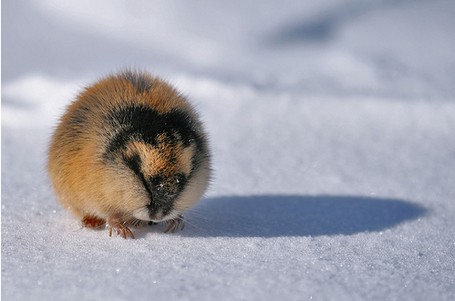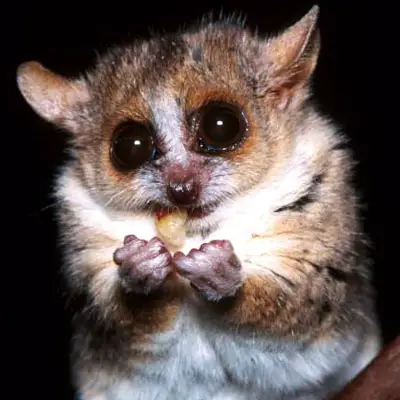Norway Lemming
Norway Lemmings are a common species of lemming, found in Scandinavia and bordering parts of Russia. These attractive little mammals have an unusual lifestyle, having one of the fastest reproduction rates of all animals. Every three to four years, when the population hits peak, they have to move to new territories and for many years, people thought this migration was a mass suicide.
These small mammals appear similar to hamsters, being 10-15 cm long. Their fur is a combination of black, brown and white, varying between specific individuals. The “fur ball” appearance has brought people’s interest to these animals, therefore it was shocking for many people to see the lemmings migrate, which often appeared as a mass suicide.
Norway Lemmings live in the Scandinavian tundra, digging holes under the snow. Their burrows are inlaid with grass and moss, to keep it dry. They migrate twice a year, moving to richer feeding pastures in the summer. They don’t seem to be bothered by humans and in summer massive herds of lemmings can be seen near towns and cities. In fall, they move back to the wet forests where they spend their winter, digging up food from under the snow.
Norway Lemmings feed on moss, grass and other vegetation found in the tundra. In winter, when land is covered by snow, it gets harder for lemmings to find food. Despite their small size, Norway Lemmings require massive amounts of food, which they search for both day and night. After a two hour activity, the lemming takes a two hour rest.
These mammals reproduce quickly, even in not very hospitable regions. Norway Lemmings can mate at any time of the year and once a pair of lemmings held in captivity was observed to have eight litters in a period of 167 days. When their population reaches a critical point, when there is not enough food for all the lemmings, they decide to move to another area. These migrations happen every 3 – 4 years, and they often look harsh, as many lemmings die before reaching the destination. When they have started a migration, nothing can stop them – not even a city or a lake (which is why migrations often seemed as mass suicide, when the lemmings simply swam into water and drowned after a while).
Many Norway Lemmings also fall prey to many land predators that hunt them, as they are the most hunted animal and the main food source for many animals, such as bears, wolves, wolverines and foxes. As cruel as it might seem, this is nature’s way of keeping the lemmings’ population in control. If the Norway Lemmings weren’t hunted so much and if so many of them didn’t die during migrations, they would probably inhabit every part of the world right now. A computer game has also been named after these animals for their migration habits.





arrgh
RAWR!
please save them ,they makes our life happy in some way.
this site has dollphinse my sister loves them
this was a link for my science prodgect on Norway Lemmings it helped me a lot thx!!!